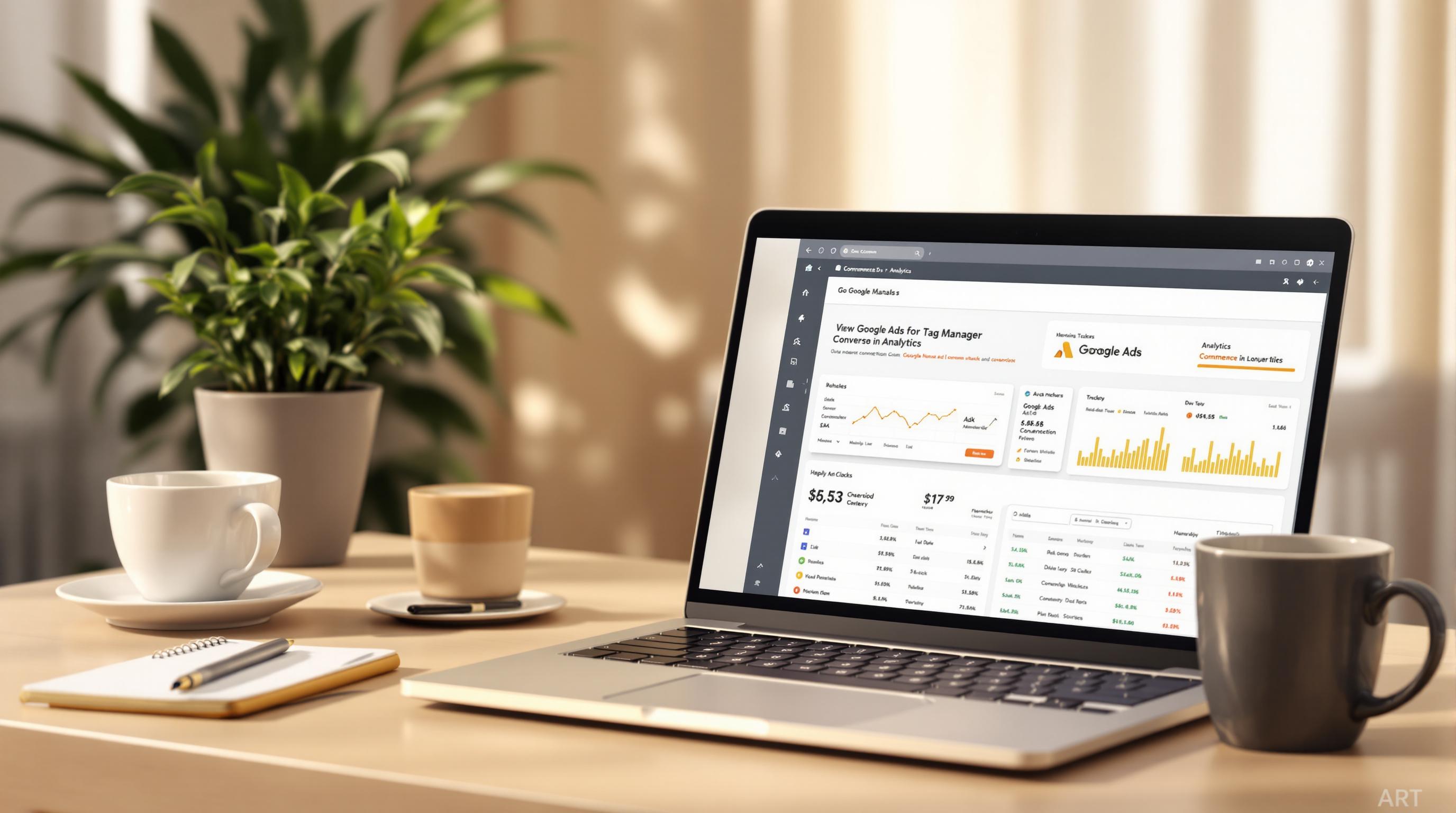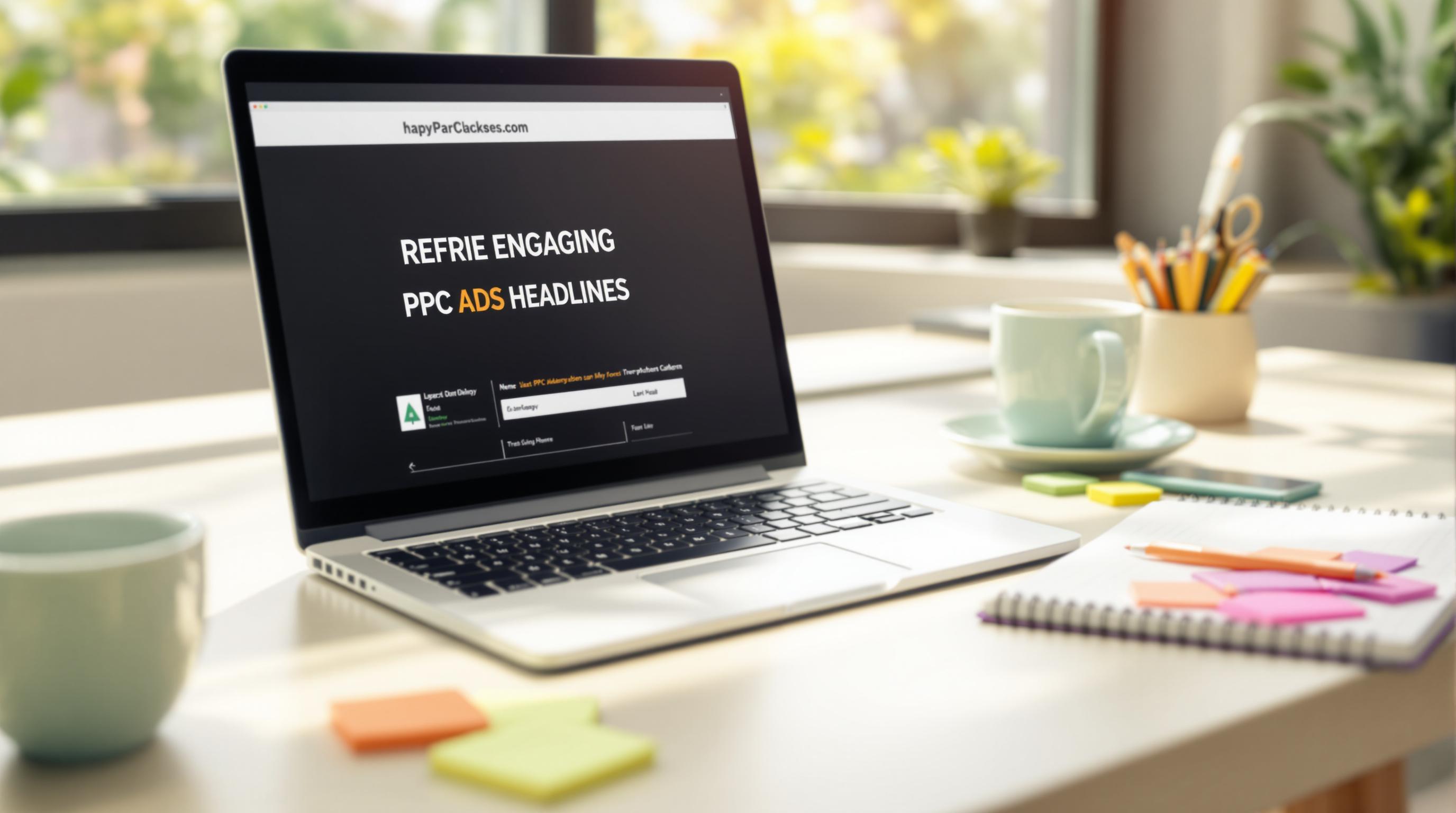Want to create Twitter ads that drive results? Here’s a quick guide to get started:
- Grab Attention Quickly: Use short, clear headlines that highlight benefits and solve problems.
- Use Strong CTAs: Tell users exactly what to do next with action-oriented language.
- Focus on Visuals: Ads with videos or eye-catching images boost engagement by up to 18%.
- Target Smartly: Combine demographic, interest-based, and behavioral filters for better audience reach.
- Track and Optimize: Monitor metrics like CTR and conversion rates, and use A/B testing to refine your ads.
How To Create Twitter Ads For Beginners
Basics of Twitter Advertising
To succeed with Twitter advertising, you need to focus on three main areas: ad formats, what drives conversions, and the platform's rules.
Twitter Ad Formats and Their Uses
Twitter provides several ad formats tailored to different goals. Here's a quick overview:
| Ad Format | Best For | Highlights |
|---|---|---|
| Promoted Tweets | Driving website traffic | Encourages engagement and action |
| Promoted Accounts | Growing followers | Helps build an audience and boost visibility |
| Promoted Trends | Increasing brand exposure | Reaches a large audience through trending topics |
| Video Ads | Telling visual stories | Captures attention with engaging visuals |
After choosing the right format, focus on creating ads that resonate with your audience. Start with the basics below.
Key Elements of a Converting Twitter Ad
To make your Twitter ad stand out, include these must-haves:
- Clear benefits that grab attention and highlight what users gain.
- A strong CTA (call-to-action) guiding users on the next step.
- Eye-catching visuals that enhance your message.
- Selective use of hashtags to improve discoverability without overcrowding.
Twitter Ad Policies and Guidelines
Twitter has strict rules to maintain a positive experience for users and advertisers. Here's what to keep in mind:
Content Rules:
- Avoid prohibited topics or sensitive content.
- Follow targeting restrictions to reach the right audience.
Technical Specs:
- Use the correct image and video dimensions.
- Stick to text limits for better readability.
- Ensure your ads are optimized for mobile users.
For advanced tools and resources, check out the Top PPC Marketing Directory.
Creating Ad Copy for Engagement and Conversion
Writing Short and Effective Headlines
Your Twitter ad headline needs to grab attention fast and deliver clear value. To keep it impactful, stick to under 100 characters and focus on the main benefit your audience cares about.
Here’s a breakdown of what makes a headline work:
| Component | Example | Purpose |
|---|---|---|
| Problem | "Tired of Low Website Traffic?" | Addresses a pain point |
| Solution | "Double Your Conversions" | Offers a clear result |
| Urgency | "24-Hour Flash Sale" | Adds time sensitivity |
| Value | "Save 20% Today" | Emphasizes the benefit |
Once you’ve captured attention with your headline, follow up with a direct call-to-action (CTA) to encourage clicks or conversions.
Using Clear Calls-to-Action (CTAs)
A strong CTA tells users exactly what to do next. Avoid vague phrases and instead use action-driven language that conveys urgency and highlights the benefit of taking action.
Strategic Use of Hashtags and Mentions
Hashtags can improve visibility, but overdoing it can hurt your ad’s performance. Stick to a minimal, focused approach to make your message clear and aligned with Twitter's Section 2.3 content policies. Here’s how to use hashtags effectively:
- Limit yourself to 1-3 relevant hashtags per ad.
- Place hashtags at the end of your copy rather than within sentences.
- Avoid mentions in promoted tweets to keep users focused on your ad [3][1].
Pro Tip: Use Twitter’s search tool to identify trending hashtags in your industry. For example, if you’re advertising a software tool, tags like #SaaS or #ProductivityTools are more likely to resonate than generic ones.
Choosing Visuals to Boost Ad Performance
Selecting Eye-Catching Images and Videos
Twitter places a strong focus on visuals, and for good reason - 97% of users pay attention to visuals while scrolling [3]. To grab attention and drive engagement, consider these popular formats:
| Visual Type | Best Practices | Impact on Performance |
|---|---|---|
| Static Images | Use a 1:1 aspect ratio, keep text minimal, and ensure high contrast | Great for building brand awareness and quick interactions |
| Short Videos | Keep them under 15 seconds, hook viewers in the first 3 seconds | Achieves 80% higher engagement rates on mobile devices |
| Carousel Ads | Include 2-6 related images with consistent branding | Perfect for showcasing products or telling a story |
Make sure your visuals are mobile-friendly with bold contrasts and branding that matches your overall message. Also, tie your visuals closely to your headline and call-to-action (CTA) to create a cohesive ad experience.
Meeting Twitter's Image and Video Requirements
To ensure your visuals display properly, follow these key technical guidelines tailored for Twitter:
Image Requirements:
- Minimum size: 440 x 440 pixels
- Recommended aspect ratio: 1:1 (square) for better mobile visibility
- Accepted formats: PNG or JPEG
- Maximum file size: 5MB
Video Specifications:
- Length: Keep it under 15 seconds (aligning with Twitter's data on video engagement)
- Format: MP4 or MOV
- Minimum resolution: 1280 x 720
- File size: Up to 1GB
- Frame rate: 30 FPS recommended
Avoid cluttered or overly detailed visuals that may lose their impact on smaller screens [1]. Instead, focus on clean, straightforward designs that deliver your message instantly.
sbb-itb-89b8f36
Targeting the Right Audience for Conversions
Using Twitter's Targeting Options
Twitter offers a range of targeting methods to help advertisers connect with users most likely to convert. These options can be combined strategically to improve results:
| Targeting Type | Description | Best Use Case |
|---|---|---|
| Demographic | Age, gender, location | Narrow down users by basic characteristics |
| Interest-based | Topics, keywords, followed accounts | Reach users who share relevant interests |
| Behavioral | Purchase history, past interactions | Focus on users based on their actions |
| Follower look-alike | Similar to existing followers | Expand reach to similar potential customers |
For better results, consider layering multiple targeting methods. For example, you could combine demographic filters with interest-based targeting to focus on users who not only match your customer profile but also show interest in relevant topics.
Pro Tips for Advanced Targeting:
- Use negative keywords to filter out irrelevant audiences.
- Target followers of complementary brands to reach potential customers without competing directly.
- Leverage keyword targeting to connect with users discussing topics related to your product or service.
Once your audience is defined, retargeting can help you re-engage users who have already shown interest in your brand.
Using Retargeting to Re-engage Users
Twitter's retargeting tools allow you to reconnect with users already familiar with your brand, increasing the chances of conversion. This can include website visitors (tracked via Twitter Pixel), app users, or even users who have interacted with your tweets.
Segment your audience based on specific actions they’ve taken, such as:
- Visiting particular product pages
- Adding items to their cart but not completing the purchase
- Starting the sign-up process
- Making previous purchases
How to Optimize Retargeting Campaigns:
- Start with broad campaigns to gather data.
- Analyze and identify segments that convert well.
- Focus your budget on high-performing groups.
- Match your call-to-action (CTA) to each segment’s behavior. For instance, use "Complete Your Purchase" for cart abandoners or "Explore More Options" for product page visitors.
These strategies ensure your campaigns are tailored to user behavior, boosting the likelihood of conversions.
Tracking and Improving Ad Performance
Key Metrics for Twitter Ads
Keep an eye on these important metrics to evaluate your Twitter ad campaigns:
| Metric | What It Measures | Why It Matters |
|---|---|---|
| Click-Through Rate (CTR) | The percentage of users who click on your ad | Reflects how engaging your ad copy and visuals are |
| Conversion Rate | The percentage of clicks that lead to desired actions | Highlights how well your ad drives meaningful outcomes |
| Cost Per Conversion | Total spend divided by the number of conversions | Shows how efficiently your campaign is spending its budget |
Check these metrics weekly to identify patterns, such as ad fatigue or targeting issues. Use the insights to adjust your strategies, as discussed in Section 4.
A/B Testing for Ad Optimization
When testing your ads, focus on one element at a time to get clear results. Here’s how to approach A/B testing:
- Test specific components like headlines, images, or calls-to-action (CTAs).
- Run tests for 7-14 days to gather enough data, ensuring audience groups are similar.
- Apply the best-performing elements to your live campaigns.
Leverage the copywriting tips from Section 3 to create more effective test variations.
Using Tools for Ad Optimization
Twitter’s analytics are helpful, but additional tools can take your ad performance to the next level. The Top PPC Marketing Directory (https://ppcmarketinghub.com) provides access to:
- Bid management platforms
- Keyword research tools
- Ad copy refinement software
- Performance tracking solutions
These tools can automate bid adjustments and analyze performance more effectively. Choose options that integrate with the Twitter API for real-time insights. They’ll help you implement the conversion-driven strategies mentioned earlier with greater precision.
Conclusion and Key Points
Creating Twitter ads that drive results means combining short, impactful copy, eye-catching visuals, and data-backed strategies. To get the most out of your campaigns, focus on these three essentials:
- Clear and concise copy: Use strong action words and highlight clear benefits to grab attention quickly.
- Engaging visuals: Videos under 15 seconds often perform better, so keep them short and compelling.
- Data-driven adjustments: Regularly analyze performance metrics to refine your approach.
Action Plan
Here’s how you can put these strategies into practice:
| Focus Area | Key Action | Expected Outcome |
|---|---|---|
| Formats | Align ad format with your campaign’s goal | More relevant ads |
| CTAs | Include strong action words | Up to 28% boost in conversions |
| Targeting | Apply layered audience filters | Improved ROI |
For more details, revisit Section 4 for targeting techniques and Section 3 for copywriting tips.
To maintain success, review your metrics weekly and test different ad elements through A/B testing. These steps, combined with automated tools for bid adjustments and targeting, can help fine-tune your campaigns for better results.
FAQs
What is the best practice for Twitter ad copy?
The most effective Twitter ad copy is short, clear, and drives action. Use strong, action-focused language and limit hashtags to 1-2 relevant ones to boost reach without looking spammy [2][4].
Here’s a quick breakdown of what works:
| Element | Best Practice | Impact |
|---|---|---|
| Length | Short, punchy messages | Easier to read |
| CTA | Use phrases like "Learn More" | Boosts engagement |
| Urgency | Time-sensitive offers | Encourages conversions |
| Hashtags | Stick to 1-2 relevant tags | Increases discoverability |
These tips align with the headline and CTA strategies discussed in Section 3.1.
What targeting strategies work best?
To get better results, combine demographic filters with interest-based targeting (see Section 2.3). Layering these options helps you reach a more specific audience that’s more likely to take action [1][2]. For a detailed guide, revisit Section 2.3 on layered targeting.
How can I measure ad success?
Focus on metrics like engagement rates, conversion rates, and cost per conversion. These numbers can guide you in tweaking and improving your ads. Regular testing and adjustments are key to staying effective [1][4].


